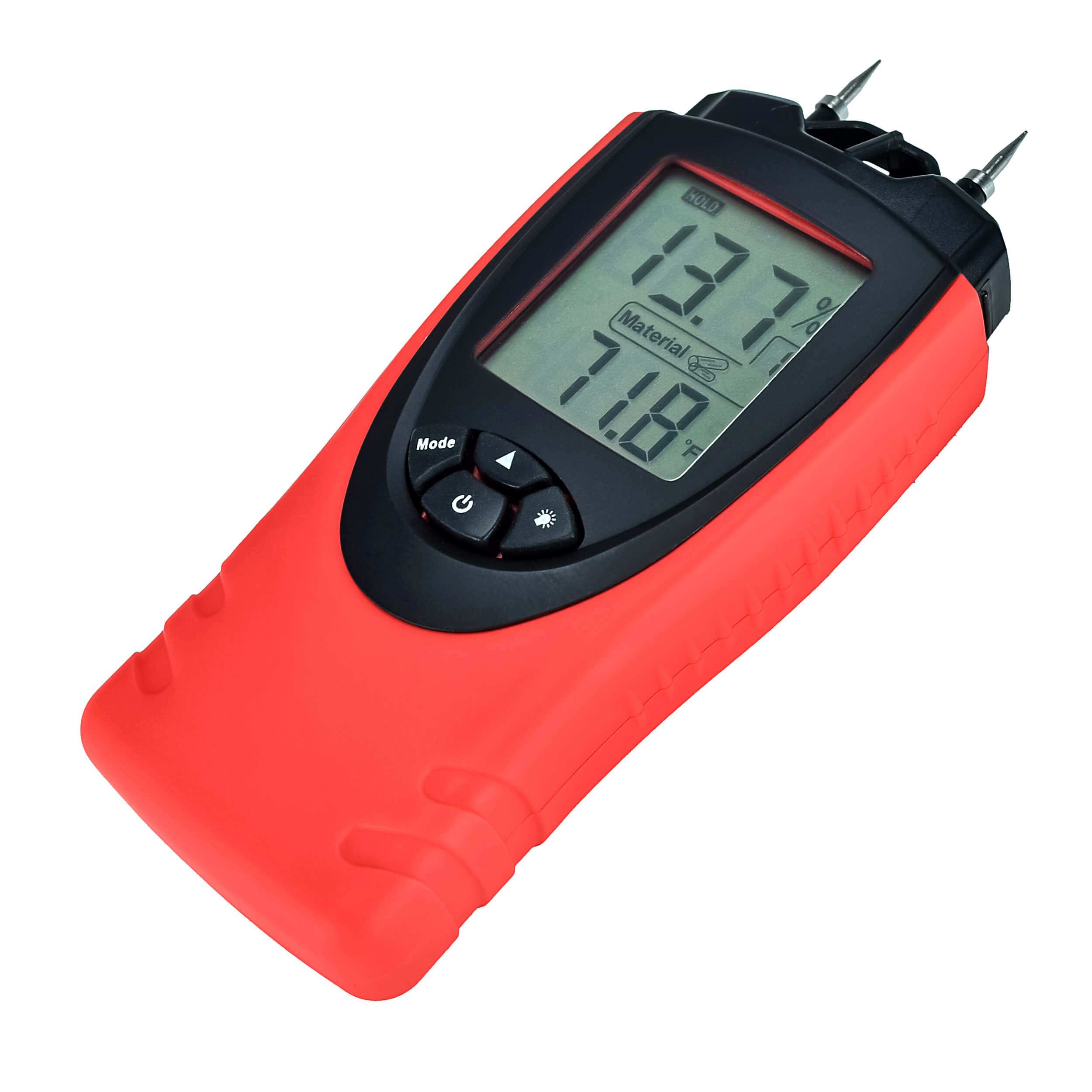The Ultimate Guide to Dampness Meters: A Comprehensive Overview and Just How They Can Conserve You Cash
Moisture meters serve as indispensable devices in spotting and checking moisture content in materials, assisting in avoiding costly damages and making sure the top quality of products. Comprehending the subtleties of various types of dampness meters, their applications, and the prospective cost-saving advantages they use can be a game-changer for companies and specialists alike.
Sorts Of Dampness Meters
One typical kind is the pin-type wetness meter, which gauges the electric resistance in between 2 pins placed right into a product. Pinless moisture meters, on the other hand, use electromagnetic sensor plates to scan a larger area without causing damages to the product's surface area.

Additionally, there are additionally specialized moisture meters made for particular materials like hay, grain, or dirt. These meters give precise wetness analyses customized to the special residential properties of the material being tested. Infrared moisture meters determine the thermal properties of a material to establish its dampness material non-invasively, making them useful for applications where pin or pinless meters may not appropriate. Comprehending the different types of wetness meters available can help markets pick one of the most suitable device for their particular moisture dimension demands.

Advantages of Making Use Of Dampness Meters
Wetness meters supply invaluable advantages in accurately keeping an eye on and evaluating wetness degrees in varied materials and atmospheres (Moisture Meter). Among the main advantages of using dampness meters is the prevention of potential damage triggered by excess wetness. By detecting and addressing high moisture degrees beforehand, moisture meters help to avoid mold development, rot, and structural damages in structures, conserving both money and time on repair services. Furthermore, moisture meters help in ensuring the high quality of products during construction or production procedures. By precisely measuring wetness content, these tools aid preserve the stability of wood, drywall, concrete, and various other materials, decreasing the threat of defects or failings.
Additionally, utilizing moisture meters can result in enhanced power efficiency. By determining areas with high wetness levels, such as leaks or poor insulation, modifications can be made to improve energy preservation and lower utility costs. In farming setups, wetness meters play an important function in maximizing crop returns by enabling farmers to check dirt wetness degrees and make educated irrigation choices. In general, the benefits of making use of wetness meters extend throughout various markets, offering cost-effective solutions and promoting better quality assurance practices.
Just How to Pick the Right Wetness Meter
When picking a moisture meter, it's essential to ensure that the meter is suitable for the details material you will certainly be testing. Various materials have varying electrical buildings that can influence wetness readings, so selecting a meter developed for your material is vital for accurate outcomes. By thoroughly examining these elements, you can pick a dampness meter that satisfies your needs and gives accurate moisture measurements for your projects.
Correct Strategies for Dampness Meter Usage

Expense Savings Via Wetness Meter Applications
Just how can the calculated application of wetness meters lead to substantial cost savings throughout different sectors? In the agriculture sector, dampness meters aid in figuring out the optimal time for harvesting plants, preventing excess or over-drying dampness that can impact the last item's quality.
Similarly, in construction, dampness meters aid prevent costly problems by identifying moisture levels in structure products, such as timber or concrete, which can result in architectural try here concerns if not resolved promptly. By identifying trouble areas early on, contractors can take corrective steps to prevent comprehensive repair work or substitutes, eventually conserving money and time.
Furthermore, in the food handling industry, wetness meters are crucial for keeping an eye on item quality and ensuring compliance with safety and security guidelines. By properly gauging wetness web content in foodstuff, suppliers can stop perishing, preserve freshness, and minimize waste, leading to significant price financial savings. On the whole, the calculated application of wetness meters is an important financial investment that can result in significant price reductions and enhanced effectiveness across numerous industries.
Conclusion
To conclude, moisture meters are useful tools for finding and measuring wetness degrees in various materials. By making use of the best moisture meter and following proper methods, customers can properly stop expensive problems triggered by excess dampness. Investing in a high quality wetness meter can lead to pop over here considerable price financial savings in the lengthy run by determining possible concerns early on and allowing timely remediation. Ultimately, dampness meters are important tools for keeping the stability and longevity of materials and structures.
Dampness meters serve as important devices in detecting and keeping an eye on moisture material in materials, helping in protecting against costly damages and making sure the quality of items. Infrared moisture meters measure the thermal residential or commercial properties of a material to identify its dampness content non-invasively, making them valuable for applications where pin or pinless meters might not be suitable.Moisture meters use invaluable advantages in accurately assessing and checking moisture levels article in diverse materials and settings. In agricultural setups, dampness meters play an important duty in enhancing plant returns by enabling farmers to keep an eye on dirt dampness levels and make informed watering choices.In verdict, dampness meters are important tools for detecting and measuring moisture levels in different products.